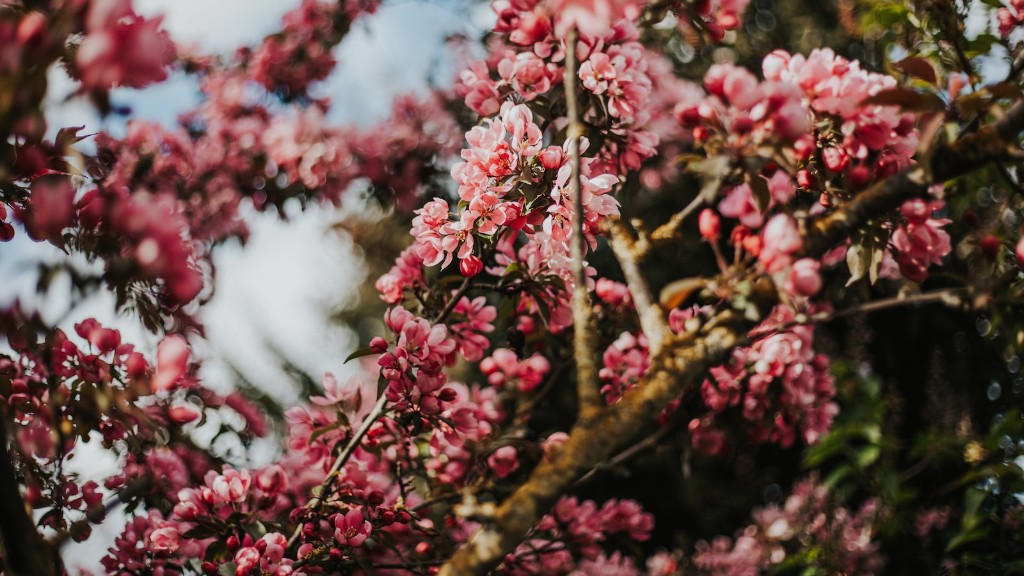What is an Oil Palm Tree?
An oil palm tree is a type of palm tree grown for commercial use and native to areas of tropical Africa and Southeast Asia. The oil palm is an oil-producing crop and its cultivation is used to produce palm oil, a popular cooking oil and product used in a variety of foods and industries. Oil palm cultivation began in Africa and Asia many centuries ago, where it became a culinary staple and an important source of oil, medicine, and nutrition.
Oil palm trees are grown extensively in tropical climates and are one of the most yield-dense crops cultivated today. Oil palm trees are capable of reaching heights of up to 25 meters and thrive in wet, hot climates where temperatures reach 30°C or higher. It is a semi-perennial plant with an incredibly high yield potential, yielding up to 10 times the amount of oil produced by soybeans and rapeseed.
The oil palm has a long fibrous trunk divided into swells with one main stem and several arching branches. Its leaves are large and glossy, and its fruit has a cylindrical shape and grows in bunches. The oil palm fruit has an outer coating made of fleshy pulp and a single hard seed in the middle. Once the seed is extracted from the pulp, it is processed to produce palm oil.
The most common types of oil palm trees are Elaeis guineensis and Attalea maripa. Elaeis guineensis is the most widely cultivated variety, known for its high oil content and is the predominant source of commercial palm oil. Attalea maripa is native to the Amazon region, where it has a wide array of uses in traditional medicine, food, and cosmetics.
Oil palm cultivation
Oil palm cultivation is a complex process requiring high levels of knowledge, expertise, and investment. The trees require low levels of fertilizer and pesticides, and the fruit can be harvested from the same tree for up to 25 years and beyond. To ensure high yield potential, oil palm farmers use selective breeding practices, improve irrigation and other infrastructure, and use advanced technology for collecting, extracting, and processing the oil.
Oil palm trees are susceptible to a range of diseases, pests, and fungi. To prevent infection, farmers use pest monitoring techniques and cultivate their trees in soil conditions that prevent them from becoming susceptible to disease. Oil palm trees are also highly sensitive to environmental changes, and farmers must be aware of weather conditions and climate shifts that could potentially damage their crops.
Environmental impact of oil palm cultivation
The cultivation of oil palm trees has been a controversial subject for decades due to its potential impacts on the environment and the local communities in which it is cultivated. One of the main issues is that oil palm cultivation can cause the deforestation of large areas of rainforest and the displacement of local communities. Expansion of oil palm plantations has been known to lead to loss of biodiversity and habitat fragmentation.
The use of herbicides, pesticides, and fertilizers is also a concern, as they can lead to water and soil contamination, as well as air pollution. Additionally, oil palm plantations are known to contribute to climate change, releasing significant amounts of greenhouse gases such as carbon dioxide and methane.
Economic impact of oil palm cultivation
In addition to its environmental impacts, oil palm cultivation has been known to have economic benefits. Oil palm cultivation has been an important source of income for small-scale farmers in many countries in Africa and Asia, and can lead to increased rural development. In addition, oil palm cultivation can also lead to improved infrastructure, access to education and health services, and increased employment opportunities.
However, there are also concerns about the economic impacts of oil palm cultivation. Oil palm cultivation can lead to price volatility, which can have a negative impact on small-scale farmers’ income. Additionally, the industry is heavily reliant on large-scale producers, with smaller producers accounting for only a small fraction of total supply. This has led to some cases of exploitation of small-scale farmers, and the presence of child labor and forced labor in some oil palm plantations.
Social impact of oil palm cultivation
Oil palm cultivation can also lead to social impacts. In some communities, oil palm cultivation has been associated with displacement and dehumanization of local communities. Many communities have lost access to their ancestral lands as a result of oil palm plantations, leading to a decline in traditional customs and cultural practices. Additionally, oil palm cultivation has been associated with economic inequality, with a small number of large-scale landowners controlling the majority of production.
In some cases, oil palm cultivation has also been linked to human rights violations. In some parts of Southeast Asia, large-scale plantations have been known to use forced and child labor, as well as hazardous working conditions. There have also been cases of workers facing discrimination, poor wages, and dangerous conditions, leading to a decline in their quality of life.
Conclusion
Oil palm trees are an important source of edible oil, medicine, and nutrition. While oil palm cultivation can have positive economic impacts, it can also have a range of negative environmental, social, and economic impacts. As oil palm cultivation continues to spread, it is important for communities to develop sustainable practices and ensure the rights of workers are protected.


